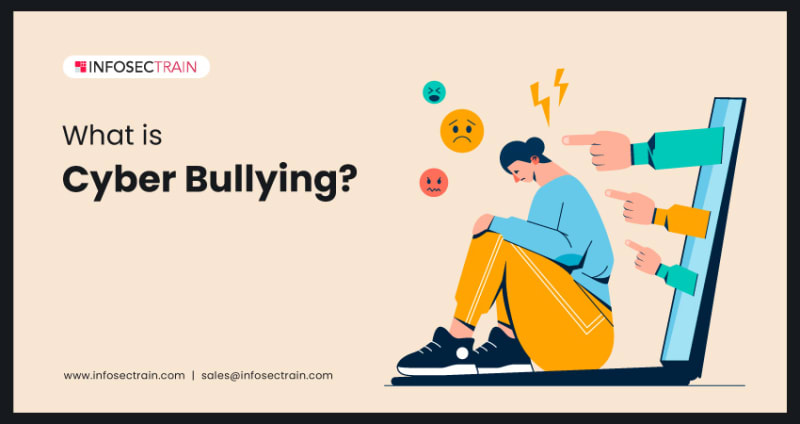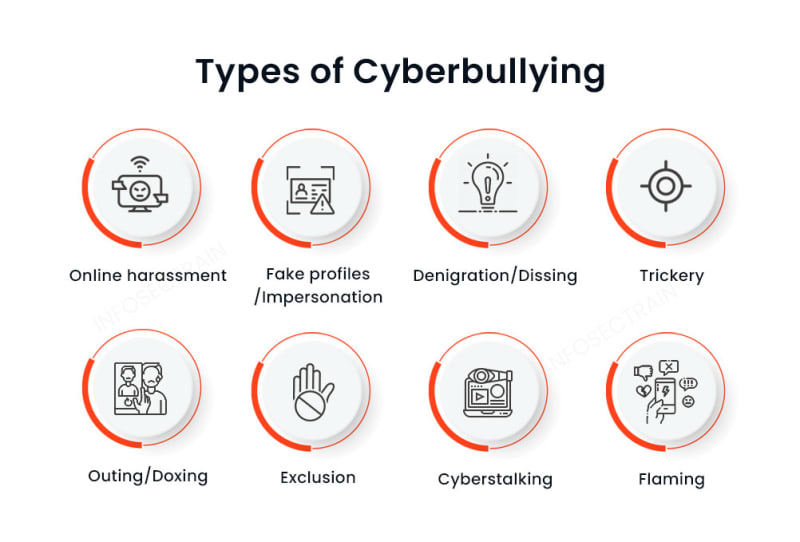In today's society, the internet has become a vital component of everyone's lives. However along with it, its negative aspects are also steadily increasing. The widespread use of the internet and social media platforms has unfortunately contributed to the rise of cyberbullying, which is a significant problem in today's digital age. The characteristics of online platforms, such as anonymity, ease of communication, and constant access, create an environment where cyberbullying can thrive and spread rapidly.
In this blog, we will discuss what cyberbullying is and its types.
What is Cyberbullying?
Cyberbullying is bullying a person or victim by posting, sending, or sharing offensive or harmful content on the internet via cell phones, social media, messaging apps, online forums, games, or other electronic services or platforms. It can include fake posts, humiliating comments, abusive messages or chats, embarrassing memes, photos, videos, nasty online rumors, etc. It may also involve harassing, threatening, embarrassing, or humiliating the victim by revealing their personal or sensitive information.
Types of Cyberbullying
There are different types of cyberbullying, and let us discuss a few.
1. Harassment: Online harassment involves sending or sharing abusive, mean, or offensive messages to a victim via social media, cell phones, and emails. It also entails harassing the victim intentionally, repeatedly, and constantly by sending unsolicited or threatening emails, negative messages, or spreading rumors.
2. Fake profiles/Impersonation: Impersonation means pretending to be someone by creating fake social media accounts or email accounts to harm the reputation of a victim or business. It is simple to accomplish by acquiring the victim's pictures from the internet and making the account seem as authentic as possible.
3. Denigration/Dissing: Denigration happens when someone posts or sends crucial information or rumors about the victim through public posts or private messages with the purpose of harming their reputation or relationships with other people.
4. Outing/Doxing: Outing occurs when someone publicly reveals or shares a victim's secrets, photographs, or personal information on social media or public forums without the victim's knowledge or permission, with the purpose of humiliating, embarrassing, or shaming the victim.
5. Exclusion: Exclusion occurs when a person or group purposely excludes the victim from an online group. It can involve excluding victims from messages, social media groups, chat rooms, occasions, or activities.
6. Cyberstalking: Cyberstalking is one of the most severe types of cyberbullying, in which the perpetrator can harass the victim via email or social media. It is usually done to induce fear in the victim by persistent harassment and denigration, but it can also physically injure the victim.
7. Trickery: Trickery is when a perpetrator tricks a victim into revealing personal information and secrets. It involves gaining victims' trust to obtain their secrets, then abusing that trust by leaking secrets and confidential information online.
8. Flaming: This cyberbullying involves derogatory comments about the victim or directly abusing and humiliating them. It is similar to trolling but usually consists of a direct attack to provoke the victim into an online fight with angry and obscene messages.
How can InfosecTrain help you?
To secure your personal information in cyberspace, you should have a basic understanding of cybersecurity. InfosecTrain provides a Cyber Security Orientation Program for beginners who want to start their career in cybersecurity. InfosecTrain is a leading training and consulting firm specializing in information security training and services. Our certified instructors provide all training with years of professional expertise.




Top comments (0)